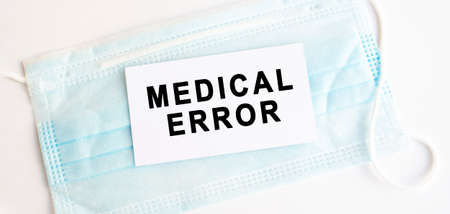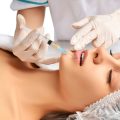1. Understanding Non-Invasive Fat Reduction
Non-invasive fat reduction procedures are popular cosmetic treatments designed to target and eliminate stubborn fat pockets without surgery or downtime. Unlike traditional liposuction, these treatments do not require incisions, anesthesia, or significant recovery time, making them appealing for people who want noticeable results with minimal disruption to their daily lives.
What Are Non-Invasive Fat Reduction Procedures?
These procedures use various technologies to break down fat cells beneath the skin. The body then naturally processes and eliminates these destroyed fat cells over time. Most non-invasive fat reduction treatments focus on areas like the abdomen, thighs, flanks (“love handles”), upper arms, and under the chin.
Common Types of Non-Invasive Fat Reduction
| Treatment | How It Works | FDA-Cleared Areas |
|---|---|---|
| CoolSculpting (Cryolipolysis) | Uses controlled cooling to freeze and destroy fat cells | Abdomen, flanks, thighs, chin, back, arms |
| SculpSure (Laser Lipolysis) | Applies laser energy to heat and disrupt fat cells | Abdomen, flanks, back, thighs, chin |
| UltraShape (Ultrasound) | Delivers focused ultrasound waves to break down fat cells | Abdomen, flanks |
| truSculpt (Radiofrequency) | Uses radiofrequency energy to heat and reduce fat cells | Abdomen, flanks, thighs, chin |
Main Features of Non-Invasive Fat Reduction Treatments:
- No Surgery: No incisions or needles required.
- No Downtime: Most people can return to normal activities right after treatment.
- Mild Side Effects: Usually limited to temporary redness, swelling, or tenderness in treated areas.
- Gradual Results: Noticeable changes typically appear within a few weeks as the body processes destroyed fat cells.
- FDA-Cleared Options: Treatments like CoolSculpting and SculpSure have been reviewed and cleared by the U.S. Food and Drug Administration for safety and effectiveness in specific body areas.
Is Non-Invasive Fat Reduction Right for You?
If you have small areas of unwanted fat that don’t respond to diet and exercise—and you prefer a treatment with minimal risk and no downtime—non-invasive fat reduction may be worth considering. However, it’s important to remember that these treatments are not a substitute for healthy lifestyle habits or significant weight loss solutions.
2. Potential Side Effects: What to Expect
Non-invasive fat reduction procedures, like CoolSculpting or laser lipolysis, are popular because they don’t require surgery or a long recovery time. However, it’s important to know that even though these treatments are generally safe, you might still experience some side effects. Here’s what you can expect after your session:
Mild and Common Side Effects
Most people have mild side effects that go away on their own within days or weeks. These are usually not serious and are part of the body’s natural response to treatment. The table below shows the most common reactions:
| Side Effect | Description | How Long It Lasts |
|---|---|---|
| Swelling | Treated area may look puffy or enlarged. | A few days to a couple of weeks. |
| Bruising | Some people notice blue or purple marks where the device was applied. | Usually fades within 1–2 weeks. |
| Numbness | A tingling or loss of feeling in the skin is common, especially with freezing methods. | A few days up to several weeks, rarely longer. |
| Redness | The skin may appear red right after the procedure. | Typically resolves in a few hours to days. |
| Mild pain or discomfort | Soreness similar to a bruise or muscle ache can occur. | A few days. |
Less Common and Serious Side Effects
While rare, more serious complications can happen. These aren’t typical, but it’s good to be aware so you know what to watch for:
- Paradoxical adipose hyperplasia (PAH): In very rare cases (mostly with cryolipolysis), instead of shrinking, the fat cells in the treated area grow larger. This condition is not dangerous but may require additional treatment to correct.
- Skin changes: Some people report firmness, lumps, or uneven texture in the treated area. These usually improve over time but sometimes need medical attention.
- Allergic reactions: Although extremely uncommon, some individuals could have an allergic reaction to gels, applicators, or topical anesthetics used during treatment.
- Persistent numbness or nerve pain: Nerve-related symptoms rarely last longer than a few weeks, but if they do, tell your provider right away.
When Should You Contact Your Provider?
If you experience severe pain, skin blisters, signs of infection (like fever or pus), or unusual swelling that doesn’t improve, reach out to your medical provider immediately. They can assess your symptoms and recommend next steps.
![]()
3. Who Is Most at Risk?
Non-invasive fat reduction procedures, like CoolSculpting or laser treatments, are generally safe for most people. However, some individuals may be more likely to experience side effects due to certain factors. Understanding who is at greater risk can help you make informed decisions before starting any treatment.
Common Risk Factors
| Risk Factor | Description |
|---|---|
| Pre-Existing Medical Conditions | People with certain health issues—such as diabetes, autoimmune disorders, or nerve conditions—may have a higher chance of complications or slower recovery. |
| Skin Type and Sensitivity | Those with sensitive skin, darker skin tones, or a history of keloid scarring might experience more pronounced reactions like pigmentation changes or irritation. |
| Lifestyle Choices | Smoking, excessive sun exposure, or poor diet can slow healing and increase the risk of bruising or swelling after the procedure. |
| Medications | Certain medications, such as blood thinners or anti-inflammatories, can make bruising and bleeding more likely during recovery. |
| Body Mass Index (BMI) | Individuals with a very high or very low BMI may not see ideal results and could be at higher risk for uneven outcomes or dissatisfaction. |
Who Should Be Extra Cautious?
- If you are pregnant or breastfeeding, non-invasive fat reduction is not recommended.
- If you have recently undergone surgery in the target area, your risk of side effects may increase.
- If you have any chronic skin infections or open wounds near the treatment site, you should wait until fully healed before proceeding.
- If you have a history of cold-related conditions (like Raynaud’s disease), treatments using cold temperatures may not be suitable for you.
Why These Factors Matter
Your overall health, skin type, and daily habits all play a role in how your body reacts to non-invasive fat reduction. Its important to discuss your full medical history and lifestyle with your provider so they can recommend the safest and most effective approach for your needs. Taking these factors into account helps reduce the chance of unwanted side effects and improves your chances of achieving the best possible results.
4. Managing Side Effects Safely
Even though non-invasive fat reduction procedures are generally considered safe, it’s normal to have some mild side effects like redness, swelling, or slight discomfort after your treatment. Here are some easy-to-follow tips and guidelines to help you minimize any discomfort, promote healing, and know when it’s time to reach out to a healthcare provider.
Tips for Minimizing Discomfort
- Follow Aftercare Instructions: Always follow the advice given by your provider. These instructions are tailored for your specific procedure and can make a big difference in how you feel afterward.
- Use Cold Compresses: Applying a cold pack can help reduce swelling and ease any tenderness in the treated area.
- Avoid Intense Activity: Give your body a chance to recover by skipping strenuous exercise for a day or two after the procedure.
- Stay Hydrated: Drinking plenty of water supports your body’s natural healing process and helps flush out waste products.
- Wear Loose Clothing: Choose comfortable clothing that won’t irritate the treated area.
Promoting Recovery
- Keep the Area Clean: Gently wash the treated skin with mild soap and water as recommended by your provider.
- Avoid Sun Exposure: Protect the treated area from direct sunlight to prevent irritation or changes in skin color.
- Rest When Needed: Listen to your body and get extra rest if you feel tired after treatment.
Common Side Effects and Simple Solutions
| Side Effect | What You Can Do |
|---|---|
| Mild Redness or Swelling | Apply a cold compress, avoid hot showers, keep area elevated if possible |
| Tenderness or Soreness | Take over-the-counter pain relievers (like Tylenol) if needed; rest the area |
| Numbness or Tingling Sensation | This is usually temporary; avoid rubbing or massaging the area too much |
| Bruising | Use gentle cold packs, avoid blood-thinning medications unless prescribed by your doctor |
When to Contact a Healthcare Provider
If you experience any of the following, call your healthcare provider right away:
- Pain that gets worse instead of better over time
- Signs of infection (such as pus, fever, or spreading redness)
- Persistent numbness or tingling lasting more than a few days
- Any unusual symptoms that worry you
5. Making an Informed Decision
Key Questions to Ask Your Provider
Before committing to any non-invasive fat reduction procedure, it’s important to have an open conversation with your provider. Here are some essential questions to consider:
| Question | Why It Matters |
|---|---|
| What are the possible side effects? | Helps you understand what to expect and how common certain reactions are. |
| How many sessions will I need? | Allows you to plan your schedule and budget. |
| Am I a good candidate for this treatment? | Makes sure the procedure fits your health profile and goals. |
| What is the expected recovery time? | Tells you how quickly you can return to normal activities. |
| Are results permanent or will I need maintenance treatments? | Helps set realistic expectations about long-term outcomes. |
| Who will perform my treatment and what are their qualifications? | Your safety depends on the provider’s expertise and training. |
Red Flags to Watch For
- Lack of medical credentials: Always make sure your provider is licensed and experienced with non-invasive fat reduction devices.
- No clear explanation of risks or side effects: If a clinic promises zero risks or refuses to discuss potential downsides, be cautious.
- Poor reviews or complaints: Check online ratings and patient feedback for warning signs about the facility or staff.
- High-pressure sales tactics: A reputable provider will never rush you into making a decision or purchasing unnecessary packages.
- No follow-up care offered: Post-treatment support should always be part of the process.
Is Non-Invasive Fat Reduction Right for You?
The best candidates for non-invasive fat reduction procedures are generally healthy adults who are close to their ideal weight but have stubborn areas of fat that don’t respond well to diet and exercise. These treatments are not meant for significant weight loss or as a substitute for healthy lifestyle habits. Consider the following factors before deciding:
| Factor | What to Consider |
|---|---|
| Your Goals | If you want subtle body contouring rather than dramatic changes, these procedures could be suitable. |
| Your Health History | Certain medical conditions may make some treatments unsafe—share your full history with your provider. |
| Your Schedule & Lifestyle | If you prefer minimal downtime, non-invasive options can fit easily into busy lives. |
| Your Budget | Treatments are often out-of-pocket expenses; check pricing and payment options in advance. |
| Your Patience for Results | Results take time (weeks to months) and multiple sessions may be needed. |
Takeaway: Be Proactive, Stay Safe
The more informed you are, the better equipped youll be to choose a procedure that aligns with your personal goals, budget, and expectations. Always prioritize safety, ask plenty of questions, and work with qualified professionals to ensure the best experience possible.


